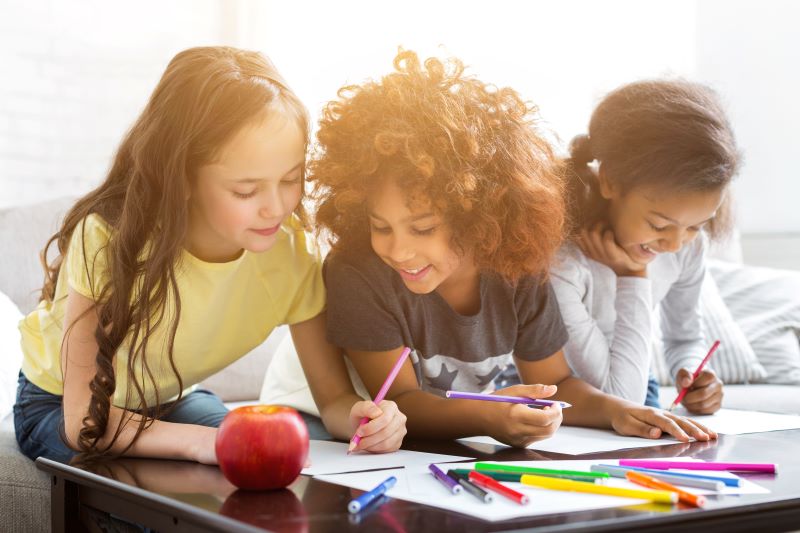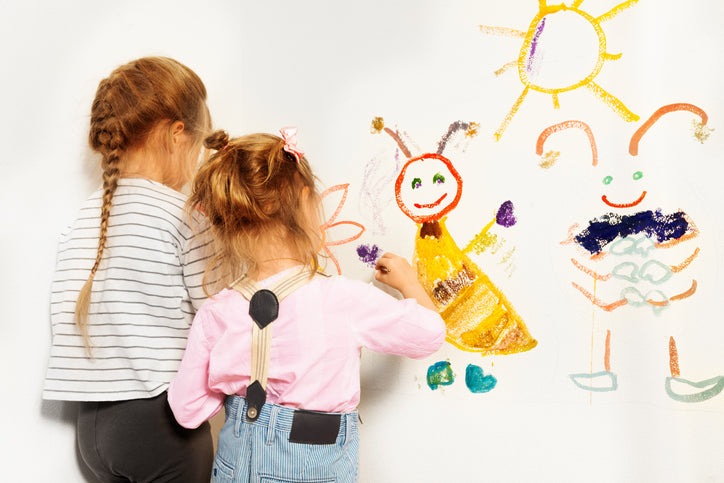The Canvas of Imagination: Embracing the Importance of Children's Art
In an era where screens dominate the landscape of childhood, the value of art as a healthy alternative to technology use has never been more pronounced. As we navigate this digital age, it's crucial to balance the scales between the virtual and the tangible, particularly when it comes to the development and well-being of children. Art offers a sanctuary for creativity, emotional expression, and cognitive growth, providing benefits that technology, in its immediacy and distraction, often cannot.
Enhancing Academic Skills: The benefits of art extend beyond the canvas, influencing academic achievement in seemingly unrelated subjects. The skills honed through artistic expression, such as fine motor skills, pattern recognition, and spatial awareness, play a crucial role in the development of reading, writing, and mathematical abilities. Kid's art, therefore, is not just an elective in the curriculum of life but a core subject.
Fostering Creativity and Innovation: Art encourages children to think outside the proverbial box, promoting creativity and innovation. Unlike technology, which often provides instant solutions and gratification, art challenges children to explore their thoughts, feelings, and ideas in a more profound and introspective way. This process of creation fosters imaginative thinking, a skill that is invaluable in both academic and personal growth.
Enhancing Fine Motor Skills and Coordination: The physical act of drawing, painting, or sculpting develops fine motor skills and hand-eye coordination. These tactile experiences are critical in early childhood development. Technology, while beneficial in certain educational aspects, cannot replicate the sensory feedback and the fine motor skill refinement that comes from manipulating art materials.
Promoting Emotional Expression and Stress Relief: Art serves as a powerful tool for emotional expression and stress relief. It allows children a safe space to express their feelings and work through emotions without the need for words. In contrast, excessive technology use has been linked to increased stress and anxiety in children, making art an essential healthy outlet for emotional well-being.
Encouraging Problem-Solving and Critical Thinking: Creating art teaches children to make decisions, solve problems, and deal with frustration in a constructive way. When a child decides what to draw, how to mix colors, or how to deal with an unintended mark on their artwork, they are engaging in critical thinking and problem-solving. Technology, especially when it involves passive consumption, does not always engage these cognitive processes to the same extent.
Supporting Social Interaction: Children's art can be a highly social activity, encouraging cooperation, sharing, and understanding. Group art projects foster teamwork and communication skills, providing a sense of community and belonging. Conversely, technology, particularly when used in isolation, can hinder social development and contribute to a sense of loneliness. Rainbow Pony's partner and collaboration programs were created to encourage such social interaction.
In the balance between pixels and paint, let us tip the scales towards creativity, towards art, for sanity. Contact us today for inquiries on collaborations and Rainbow Pony programs, and of course don't forget to check out some of our amazing and fun designs already submitted.


